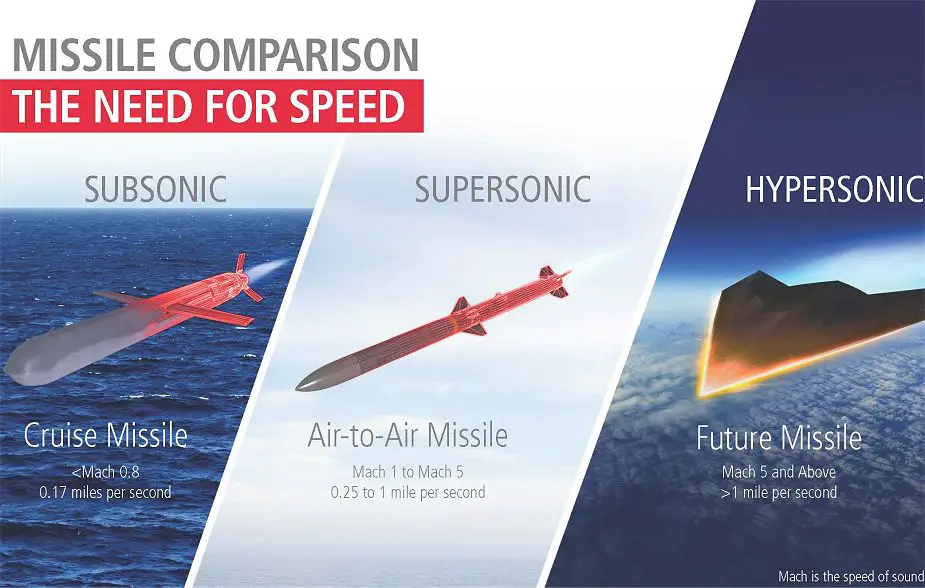Breaking news
US Navy plans to conduct a crucial hypersonic weapons test in the coming months.
The US Navy plans to conduct a crucial hypersonic weapons test in the coming months, said Secretary of the U.S. Navy Thomas Modly on Friday, February 7, 2020, in a message to the fleet.
 Hypersonic weapons can travel at five times the speed of sound (Mach 5 and faster), covering vast distances in minutes. They fall into two categories: boost glide and scramjet. (Picture source Raytheon)
Hypersonic weapons can travel at five times the speed of sound (Mach 5 and faster), covering vast distances in minutes. They fall into two categories: boost glide and scramjet. (Picture source Raytheon)
A flight experiment has been scheduled later this fiscal year to demonstrate the effectiveness of the Navy-designed Hypersonic Glide Body, according to the website military.com. The U.S. Army, Navy, and Air Force are all working on hypersonic weapons with major shared components, with the army designing the maneuverable warhead likely to be used by all three services
According to the analysis of U.S. Naval Institute website, the speed of sound at sea level is 720 miles per hour (mph). Hypersonic weapons travel faster than Mach 5—at least five times the speed of sound, around 5,800 km/h (3,600 mph), or one mile per second. Hypersonic cruise missiles (HCMs) use rockets or jets to provide aerodynamic lift and propulsion during flight. They are similar to but faster than existing missiles, such as the subsonic U.S. Tomahawk missile, which maxes out around 900 km/h (550 mph).
While hypersonic weapons can carry conventional or nuclear warheads, they differ from existing technologies in three critical ways. First, because kinetic energy is a function of the square of velocity, a one-kilogram object delivered precisely and traveling multiples of the speed of sound can be more destructive than one kilogram of TNT. Second, the low-altitude path helps mask HCMs; when coupled with the curvature of the Earth, they are mostly invisible to early warning radars. And third, HGVs can maneuver during flight; in contrast with the predictable path of ballistic-missile descent, they are more difficult to intercept, if even detected.
U.S. Army is also on the process to develop and test new long-range strike weapons in the early 2020s, with plans to test a ground-based hypersonic missile by 2023 and prototype a super-cannon with a planned range of 1.600 km (1,000 miles).
The U.S. army’s ground-launched hypersonic weapon will have a range of 2.250 km (1,400 miles) and thus would have been banned under the Intermediate Nuclear Forces treaty between the United States and Russia, which prohibits ground-launched missiles with ranges between 500 and 5,500 kilometers.


























